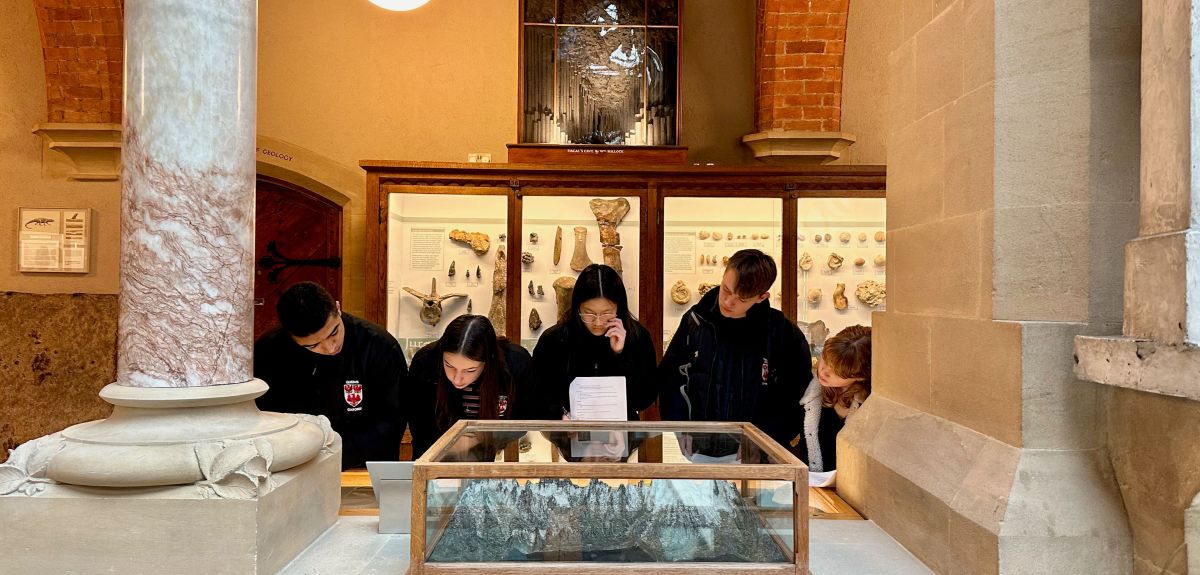
Inside an Oxford tutorial at the Museum of Natural History
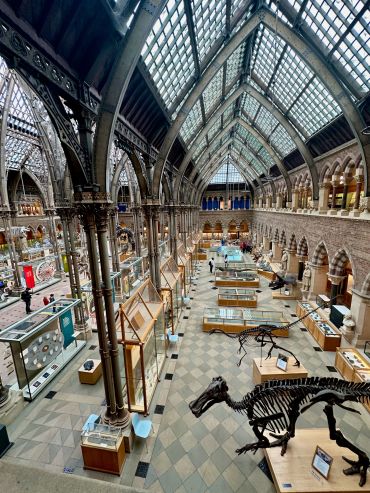
It’s the start of a new term and as the doors to Oxford’s Museum of Natural History open, five first-year undergraduate biology students arrive for their weekly Biology tutorial.
Today they are meeting Professor Lindsay Turnbull, a tutor at The Queen’s College where the students all live and study. She is also Professor of Plant Ecology in the University’s Department of Biology and author of ‘Biology: The Whole Story’, published last year.
Founded in 1860 as the centre for scientific study at Oxford, the Museum holds the University’s internationally significant collections of geological and zoological specimens. It’s the perfect place to think about the animal kingdom – the purpose of this week’s tutorial – and the different phyla or groups that make it up.
On the Museum’s ground floor, in front of eye-catching displays of colourful butterflies, spiders and fungi, parades of mammals, and replicas of dinosaur skeletons, Professor Turnbull outlines the plan for the next hour. The group is given a quiz based around key areas of study for the term and the students split into two teams and head off to find the answers within the collections.
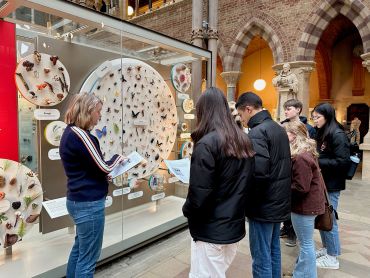
“They allow tutors to interact regularly with students and to monitor their development closely and are different from other forms of university teaching because of their personal nature and the way that you can fine-tune your teaching to suit different groups. They encourage students to talk about their work and to share their ideas. Ideally, they also allow students to gain in confidence.”
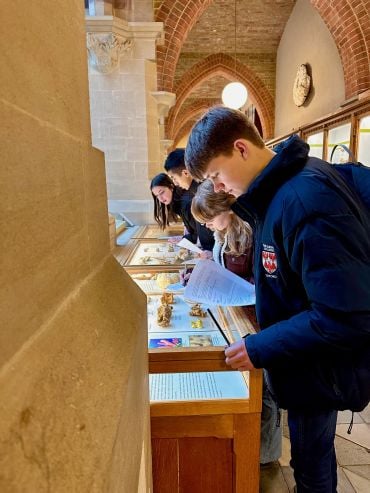
For fellow student Austin, tutorials offer a more fun and conversational experience than a lecture: “What I enjoy the most is breaking down a big problem gradually as a group, bouncing off each other's ideas to solve something that you couldn't sit down and do in an hour.”
The five Biology students meet once a week, usually at The Queen’s College, but Professor Turnbull’s tutorial locations are varied. Last term they hunted for tiny tardigrades (or moss piglets) in the University’s Botanic Gardens; “although we completely failed to find them!” she says.
Professor Turnbull believes it’s important that the students get out and about and takes her group to gain a greater familiarity with the natural world: “In the practical tutorials I’m trying to achieve a few things. First, to get to know them better, because there’s no pressure on them to perform. Second, to give them exposure to natural history. Some of our students have incredible knowledge about nature, and others have very little. It can be a real advantage to have some of that knowledge, so it’s good to share it around.”
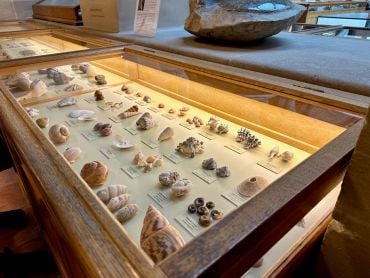
“Being able to see the animal models and fossils helps me to better visualise what we are discussing” says Eunice, “rather than trying to describe the organisms in words or through pictures on a slideshow”.
Fellow Queen’s College student Oliver, says, “Being out and about, and interacting with things that we have learnt about in lectures is immensely valuable. I think it grounds you and reminds you that what you are learning about is real and affects creatures in their day-to-day lives.”
Reconvening in the Museum’s café, the five students come back together to share and discuss what they’ve found, from a platyhelminthes – a flatworm that can grow to 12 metres and can regrow any body part – to squirting sea cucumbers.
“The session in the museum this year was great” says Professor Turnbull, “I love the museum and I’m keen for students to use it more. By showing them what’s there, I hope they’ll be more likely to return on their own and use it for themselves.”
 Africa’s change-makers: meet the Mastercard Foundation Scholars with big ambitions for the future
Africa’s change-makers: meet the Mastercard Foundation Scholars with big ambitions for the future A green fuels breakthrough: bio-engineering bacteria to become ‘hydrogen nanoreactors’
A green fuels breakthrough: bio-engineering bacteria to become ‘hydrogen nanoreactors’ Oxford's student voices at COP29
Oxford's student voices at COP29 Teaching the World’s Future Leaders
Teaching the World’s Future Leaders  A blueprint for sustainability: Building new circular battery economies to power the future
A blueprint for sustainability: Building new circular battery economies to power the future Oxford citizen science project helps improve detection of antibiotic resistance
Oxford citizen science project helps improve detection of antibiotic resistance The Oxford students at the forefront of the fight against microbial resistance
The Oxford students at the forefront of the fight against microbial resistance  The hidden cost of AI: In conversation with Professor Mark Graham
The hidden cost of AI: In conversation with Professor Mark Graham  Astrophoria Foundation Year: Dr Jo Begbie reflects on the programme’s first year
Astrophoria Foundation Year: Dr Jo Begbie reflects on the programme’s first year